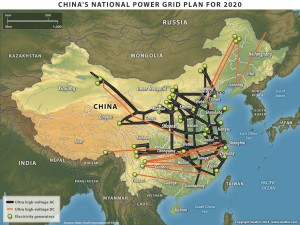China, the world’s largest electricity consumer, is exploring the possibility of allowing private capital in some power-related businesses like sales and distribution as part of its ongoing reforms for the sector since April 2015.

Currently, China State Grid Corp., China Southern Power Grid Co. and the Inner Mongolia Power Group manage China’s system operations, transmission, distribution and sales of power. China State Grid is the dominant player, accounting for 80 percent of power-sector transactions with nearly 650GW power loading.
The key points of reform are following:
- Allow multiple parties to compete in the retail and distribution business, while the electricity transmission business will remain with power grid companies.
- Change the revenue model for China’s grid operators, by setting transmission and distribution prices based on cost + tariff basis.
- Set up spot electricity trading platforms to let big consumers settle prices directly with generators rather than with grid companies.
- Strengthen governmental supervision and electric-power planning to ensure the system operates at its highest efficiency and produces reliable supply.
- Require generators to prioritise low-emission energy and ensure “relatively stable” power prices for distributed energy.
What is not clear
- The timeline for the reforms (although some media reports have mentioned 2018).
- The detailed plans on price regulations.
- Whether the power distribution and sales business will be opened up for foreign investment.
Most of all discussion are focusing on energy retailers: license, grantee, IT-Platform etc. Due to fully competition and more than 1000 retailers in Germany, many Chinese want to learn from Germany policy but stopped by difficult language and complex design.
Article written by the Chinese Association for Renewable Energy in Germany e.V.



